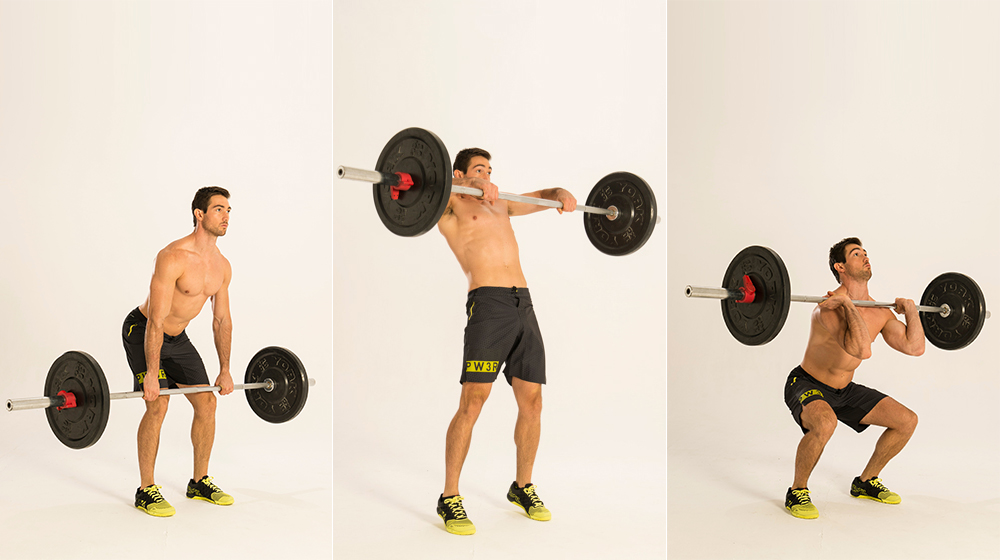When it comes to serious sports performance training, six-time NBA Most Valuable Player Kareem Abdul-Jabbar put it best:
‘I try to do the right thing at the right time. They may just be little things, but usually they make the difference between winning and losing.’
Alright, while he wasn’t talking about strength training specifically, it’s hard not to accept and apply the wisdom of the 19-time All-Star. He knows the little things, or the fine details, make all the difference in a game – and you just know he carries that mentality to the weight room.
Once you’ve gotten a proven strength & conditioning routine down, it becomes especially difficult to be mindful of the little details. Not knowing where to make small adjustments in your routine, in order to advance and take your training to the next level, will stunt your progression – you’ll be spinning your training wheels, so to say.
If you’re looking to follow The Captain’s footsteps (good luck) to greatness or basketball immortality, these are small adaptations you can make to step up your strength and conditioning training.
Log a Training Journal.
Believe it or not, tracking your training can improve the results you’re working towards in any exercise program. And yes, sports science does back the claim; the Association for Applied Sport Psychology adamantly recommends logging an exercise journal.
A training journal will help you keep consistent with your strength and conditioning program, as well as act as an indicator/motivator to bump up the intensity of your workouts.
When you feel like you’ve plateaued in your current regimen, and you’re just dummying your workout circuit, consult your training journal. If you see you’ve been working at the same level in terms of sets, reps, or weight for an extended period of time, that’s the green light to up the ante.
Goal Setting.
You know that training journal you should be keeping in your gym bag on the regular now? Take the very first page, and fill it out with the goals you’re gunning for in the gym.
Working out is great, and you’ll get healthier and more fit as long as you’re doing some semblance of a normal exercise routine. But if you’re looking to refine very specific muscles or reaction times, setting clear, distinct goals will keep you training focused, and with purpose.
Take the sport of basketball as an example again. Sharpshooters don’t hit the gym to ‘work on their shot’. They go there with a purpose, a goal: I’m going to work on my jump shot today. Or my free throw shot. Or my three-point range. Maybe corner three’s, rather than center court.
Making that small distinction from general goals to individualized ones makes a significant impact on your approach in the gym, which will translate into performance results. When you’re setting your goals, remember to consider factors like your injury history, equipment available, how much time you’ve got in the gym, muscle groups your targeting, the sport-specific area you’d like to improve, and…you get the idea.
If you’re having difficulty divulging gym goals, sports psychologists suggest erring to the practice of ‘SMART goals‘, which stands for: Specific, Measureable, Attainable, Relevant, and Time-Bound. Consider these principles when you’re setting goals, and you should have a realistic game plan for the upcoming season.
Switch Up the Training Stimulus.
The foundation of resistance training has always been predicated on the principle of switching up elements of your training, namely the types of exercises you perform. Your downtime, sets, reps, and weight can all be varied, too.
Resistance, strength, and conditioning training revolve around the principle of ‘progressive overload’, or the idea that you need to constantly challenge your body to see results. The human body is uncannily adaptive, only responding when continually called upon for extra exertion to meet higher physiological demands. Progressive overload reinforces the methodology through varying workouts that challenge the body, pushing a person’s limits and stimulating muscle hypertrophy.
So the next time you fall into a training rut, or think you’ve plateaued within your current regimen, audit your workout circuit. Determine a way to mix things up – if you’ve lifted the same dumbbells at the same weight for a month (consult your training journals for exact time frames), it might be time to add more mass.
Hire a Trainer.
To truly build upon a mind-muscle connection in the gym – the idea that the mind can quickly activate a muscle mentally – hiring a fitness trainer will help you understand the fundamentals of strength and conditioning exercises.
It may be hard to believe, but hearing verbal instruction while physically exerting yourself can actually help shit muscle activity to targeted muscles. A trainer will not only help you steadily progress, but also help you curb injury by overseeing you’re maintaining proper form in each exercise.
Plus, if it takes you a bit of a kick in the pants to get you off the couch and into the weight room, an experienced trainer will know how to get you motivated to work.
Adding a few of these small adaptations to your workouts or exercise circuit can lead to significant gains to your strength and conditioning. Setting goals, tracking them, challenging yourself, or getting someone to challenge you, are all proven avenues to fitness gains that don’t require a radical transformation of your exercise circuit.
If you’re looking for an experienced personal trainer in Toronto that’ll motivate and challenge you, SEMI’s fitness trainers will help you reach your performance goals.
Call us today at 1-844-223-7364!






